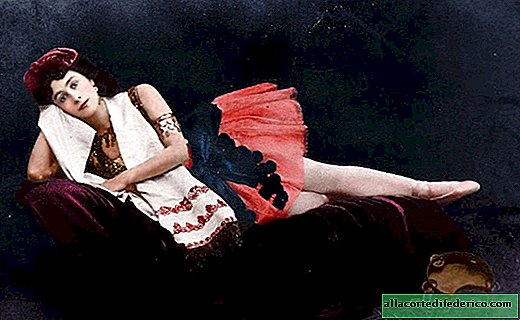Black and white world: why there are so many color blind people on Pingelap island
In the equatorial part of the Pacific Ocean is a tiny island called Pingelap, which belongs to the state of the Federated States of Micronesia (Pohnpei State). This island has an area of only 1.8 km2. It is noteworthy that among its population there is the largest percentage of people suffering from a rare form of color blindness - monochromatism, i.e. a complete lack of color vision. This is no longer anywhere in the world.

Monochromatism or achromatopsia is the rarest form of color vision impairment. People suffering from this hereditary disease see the world in black and white. Another feature of monochromatism is that in bright light people see worse than at dusk. On our planet there are few such people, less than 0.0001% of the total number of earthlings. But on an unusual island, where only 250 people live, about 5% of the population suffers from monochromatism. What can be associated with such a high rate?

It turns out that in 1775 a deadly typhoon hit the island. As a result of the disaster, most of the islanders died, about 20 people survived. This small group of people became the ancestors of all modern inhabitants of the island of Pingelap.
According to researchers, one of the 20 islanders who survived in a terrible natural disaster was a carrier of a genetic mutation, which, with a certain combination of genes, contributes to the occurrence of achromatopsia. This state of affairs led to the fact that all his descendants became carriers of a mutation that contributes to the appearance of black and white vision.

Due to the small number of islanders, closely related family alliances have become inevitable on Pingelap. This could not but affect their health: the genetic diversity of the island population was low. In genetics, this condition is called the "bottleneck effect." It is characterized by a low diversity of the gene pool, which occurs after the restoration of the population from a small number of individuals. A similar effect is observed in isolated human populations, most often island ones, and is also widely known among animals.

Interestingly, in the vast majority of cases, men suffer from achromatopsia, like all other color visual impairments. Women are only carriers of the gene, but they themselves very rarely get sick. This happens if the woman’s father suffers from achromatopsia, and the mother is a carrier of a special gene combination. At the same time, geneticists also found that non-achromatopsia spouses can have sick children. This will happen if both of them are carriers of a mutated gene, and the probability of the appearance of sick offspring is quite high - 25%.
After the discovery of an unusually high concentration of the achromatopsia gene on Pingelap Island, scientists from all over the world frequented. Genetics hope that the data obtained will help them advance in the study of not only color blindness, but also other hereditary diseases of mankind.

The material is copyrighted, when copying a link to an article or travelask.ru site is required

















